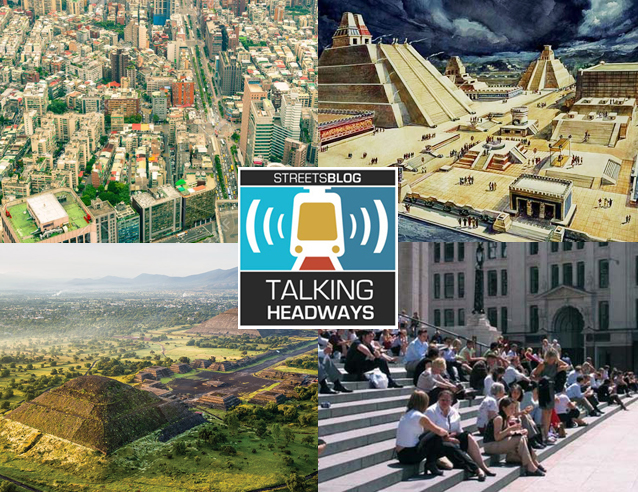This week, Michael E. Smith, an anthropologist and archeologist, talks about his Aeon Magazine article, "Energized Crowding," about life in early cities and neighborhoods.
For those of you who prefer to read rather than listen, check out the edited highlights below the player. If you want a full, unedited transcript, be our guest by clicking here.
Jeff Wood: So you’re interested in comparative urbanism, maybe give us a little bit of a definition of what that means and how it impacts your work.
Michael E. Smith: Well, when I first got going on this, I was involved in excavating Aztec cities in Mexico, and it was to compare Aztec cities or other Ancient Meso American cities with cities in Egypt or Mesopotamia or Greece and Rome, and early cities around the world, making comparisons to learn something about urbanism in general. I got started a while ago thinking about, how do ancient cities relate to contemporary cities? And can they be compared in some ways they’re radically different in some ways they’re quite similar. And so that’s sort of a more complicated comparison to make.
Wood: It’s really interesting. This is kind of the crux of your article, which discusses energized crowding as an idea that I find really fascinating. I’m curious where you came up with the general term or the idea of energized crowding and how does that fit into the comparative urbanism discussion overall?
Smith: Well, the term originated with Spiro Kostof, who was an architectural historian at Berkeley. He wrote a number of books on early cities and architecture, and he used energized crowding just for the situation that cities have lots of people, dense populations, people interact, and that process of social interaction has effects and creates a lot of what’s distinctive about cities. I got involved in some of the work on urban scaling that I talk about in that article. It was based at the Santa Fe Institute. That work is based on the similar idea that the size and density of population influences the social interactions and social interactions then generate outcomes. So energized crowding is just a way of talking about the social situation in cities and why it’s important.
Wood: It sounds a lot like what economists call the "agglomeration effect" or "agglomeration economies." I’m curious what the connections are between the two.
Smith: It’s a similar kind of thing: Agglomeration economies is usually, where do firms locate and where do people locate, but the basic idea that the concentration of people and firms and activities has effect beyond the immediate reaction. It’s basically the same idea.
Wood: It’s really interesting too, how you can extrapolate that to ancient cities versus contemporary ones. It seems like a similar metric and you have a similar ability to look back and see that things that we might see that is different are actually very similar today. You can, based on the research that the Santa Fe Institute has done, you can look at that mathematically and see how cities grew and how they interacted with each other. Then you take that back in time and it’s kind of a similar way. That was the most fascinating thing to me was that you can connect the two which, like you said, it was not something people thought that could be connected ultimately.
Smith: If you look at how do cities today differ from those in the ancient world and how are they similar — they’re similar in this area of it’s where people live; it’s where people interact, social interactions have effects and, and that’s the basic facts of urban life. They're are different in terms of communication technology and things like that.






